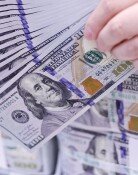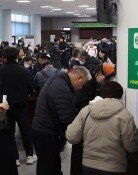Is Korea a talent-driven country?
Is Korea a talent-driven country?
Posted April. 10, 2019 07:41,
Updated April. 10, 2019 07:41
It has been reported that each pair of students of Computer Science and Engineering at Seoul National University shares a computer during programming class due to lack of educational equipment. It is an absurd reality that an enrollment quota per year has been set to be 55 students for the 15 years, which thus limits the availability of school equipment and budge scale.
Such a poor educational setting is a result of a set of regulations according to the Seoul Metropolitan Area Readjustment Planning Act established in 1982, which puts limits on the total number of each university in Seoul and its metropolitan area with the aim of preventing against a dense population. Since then, the increasing need for computer science and engineering has led the number of double majors and minors in the discipline to rise to 200 per academic year. Nevertheless, they have been left in a low-quality educational setting that only accommodates 55 students. Regulations have stood up a barrier discouraging eager students who aspire to learn and professors dedicated to teaching.
Given that even the nation’s best university is faced with such a harsh reality, the rest may be put in worse position. Indeed, Korean universities feel chocked by too many regulations that discourage them, which let government officials make adjustments to the total enrollment quotas and fiddle with admissions, tuitions, faculty employment and academic curricula. Also, there has been much criticism that the Ministry of Education puts too heavy focus on wielding their control of universities and striking a balance between universities in the metropolitan area and in other regions, rather than considering nurturing future talent.
It is a quite a contrast to China where higher education has a special place in national strategy. The Chinese government aims to invest in high-performing universities to ensure global No. 1 education, thus adjusting university enrollment quotas according to industry needs. For example, the number of graduates of Computer Science and Technology major at Tsinghua University rose from 97 in 2015 to 146 last year. Tsinghua University was chosen last year as the world’s No. 1 in computer science by U.S. News & World Report. As such, universities have taken a leap forward for a short period of time to help raise industrial competitiveness.
Unfortunately, it may be hard for Korea to grow new types of universities that are as innovative as Minerva Schools in San Francisco, known as the most innovative university in the United States for its online schooling. That is because a regulation that limits the share of online classes in Korean universities. Relieving educational regulation must be done to give universities room for breath so that Korea can nurture talent as its best driving force.







